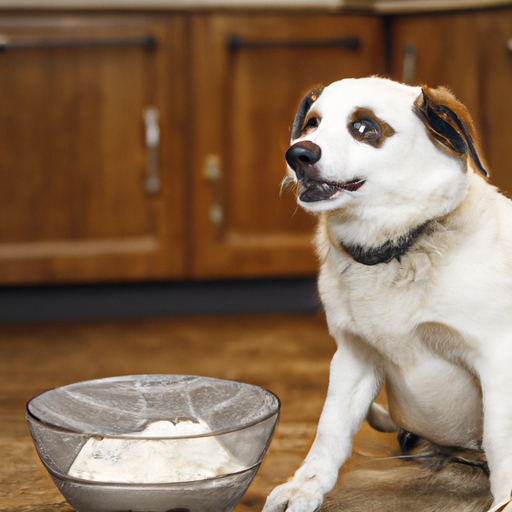As a caregiver, you’re always looking for ways to keep your canine companion healthy and happy. One question that may be on your mind is, “Can I feed my dog cottage cheese, and if so, how much?” You’ve come to the right place. This comprehensive guide will provide you with all the information you need.
1. The Nutritional Benefits of Cottage Cheese for Dogs
Cottage cheese is packed full of essential nutrients that can contribute to your dog’s overall health. Here’s a breakdown:
| Nutrient | Benefit |
|---|---|
| Protein | Supports muscle growth and repair |
| Calcium | Strengthens bones and teeth |
| Vitamins | Boosts immune system |
However, remember that while cottage cheese can provide these benefits, it should not be the primary source of these nutrients for your dog. It should supplement a balanced diet that meets all of your dog’s nutritional needs.
2. How Much Cottage Cheese is Safe for Dogs?
As with any other food, moderation is key. Even though cottage cheese is beneficial, it shouldn’t make up a large portion of your dog’s diet.
A general rule is that treats and extras should constitute no more than 10% of your dog’s diet. For a medium-sized dog, this could mean a few tablespoons of cottage cheese per day, while a smaller dog would require less.
3. When Should You Avoid Feeding Your Dog Cottage Cheese?
While cottage cheese can be a healthy addition to a dog’s diet, there are instances when it should be avoided. These include:
-
If your dog is lactose intolerant: Just like humans, some dogs cannot digest lactose, the sugar found in dairy products. Symptoms of lactose intolerance include diarrhea, vomiting, and bloating.
-
If your dog has pancreatitis: Dairy products are high in fat and can exacerbate pancreatitis, a painful condition that causes inflammation of the pancreas.
4. How to Introduce Cottage Cheese to Your Dog’s Diet
If you’ve determined that your dog can safely consume cottage cheese, start by introducing it slowly to their diet. Follow these steps:
- Start with a small amount: Begin by giving your dog a teaspoon of cottage cheese, then observe them for any adverse reactions.
- Gradually increase the amount: If your dog tolerates the cottage cheese well, you can gradually increase the amount over a period of weeks.
- Monitor your dog’s reactions: Keep an eye out for any changes in your dog’s behavior, appetite, or stool consistency. If you notice anything unusual, stop feeding them cottage cheese and consult your vet.
5. Creative Ways to Incorporate Cottage Cheese into Your Dog’s Diet
If your dog enjoys cottage cheese, you can make mealtime more exciting by incorporating it into their diet in different ways:
- Mix it with their regular dog food
- Use it as a topping for their favorite treat
- Freeze it into cubes for a refreshing summer snack
You can even use cottage cheese to make homemade dog treats. Just remember to keep the quantities small and balanced with other ingredients.
Frequently Asked Questions
Q: Can all dogs eat cottage cheese?
A: Most dogs can eat cottage cheese in moderation, but those with lactose intolerance or pancreatitis should avoid it.
Q: Can I feed my puppy cottage cheese?
A: Yes, but start with a small amount and monitor their reaction. Puppies have sensitive tummies, so any new food should be introduced gradually.
Q: Can cottage cheese cause diarrhea in dogs?
A: Yes, particularly if the dog is lactose intolerant or if they eat too much. Start with small amounts and increase gradually to gauge your dog’s tolerance.
Q: Can cottage cheese help my dog gain weight?
A: Cottage cheese can contribute to weight gain if consumed in large quantities, due to its high protein and fat content. However, if your dog needs to gain weight, consult your vet for a comprehensive feeding plan.
By understanding the benefits and potential issues with feeding your dog cottage cheese, you can make informed decisions about their diet. Always remember, when introducing any new food into your dog’s diet, moderation and careful observation are key. Your dog’s health and happiness is always worth the extra effort.



